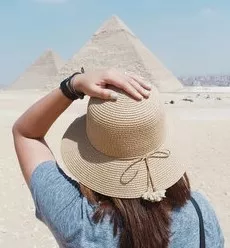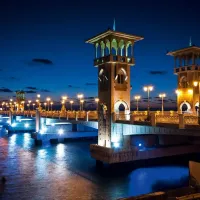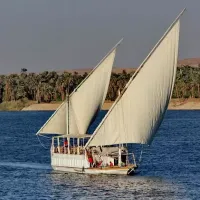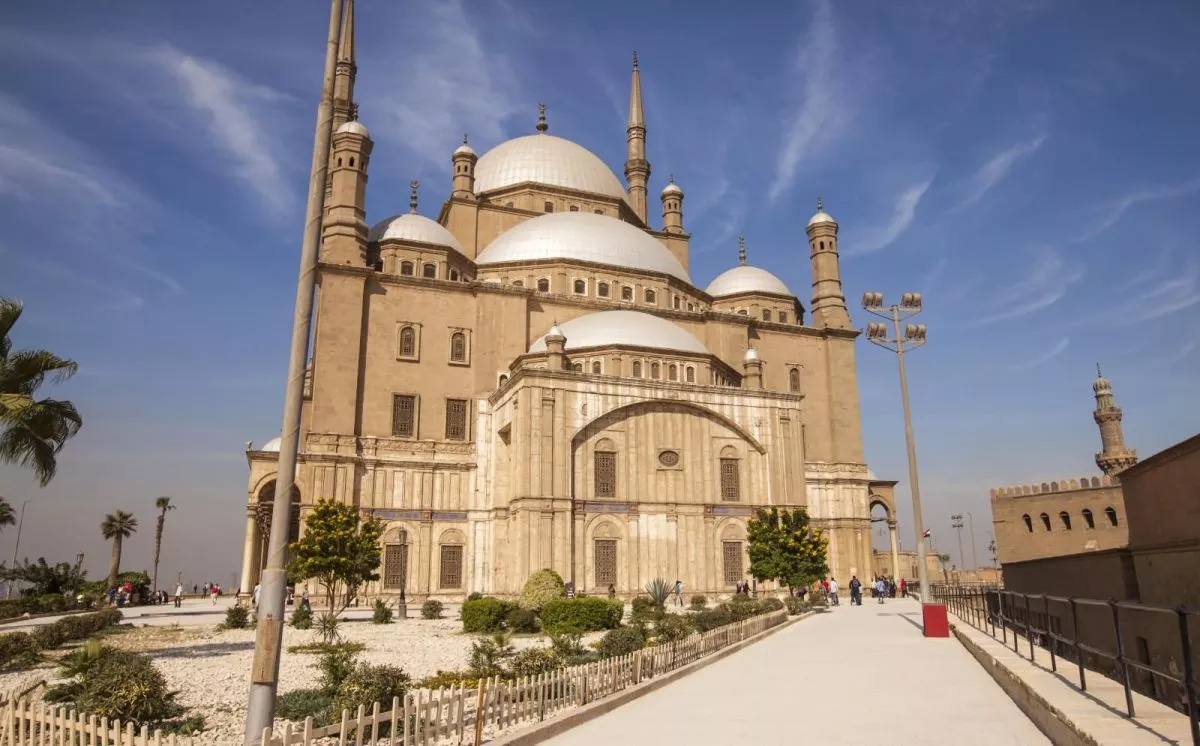Farafra Oasis Travel Guide
Al Farafra is a small oasis located in Egypt's western desert. It's one of the most isolated oases of the governorate of Al-Wadi Al-Gadid in Southern Egypt. This may be why the people who live in Farafra are still famous today for practicing their old traditions and customs.
Farafra has gained the attention of tourists during the last few years because of its unique magic and because the oasis can be the starting point for many exciting tours in the Western Desert of Egypt, like the white desert, the black desert, and the Crystal Mountains.
The location of the Farafra Oasis

The Farafra Oasis is located in the western desert of Egypt inside the borders of the governorate of Al-Wadi Al-Gadid, the largest governorate in Egypt in terms of space.
The Farafra is 170 kilometers from the Bahaerya Oasis, 627 kilometers from Cairo, and 370 kilometers to the southwest of Marsa Matruh and the Mediterranean Sea.
The History of Farafra

Historians believe that the oasis of Farafra went through three phases in prehistoric times when the oasis was exposed to heavy rains. This was proof that Farafra had hosted inhabitants since the prehistoric era when these rains attracted many Egyptians to go and live in the Farafra.
Some other historians believe that the Farafra was the connection point between the Libyan Desert and the Egyptian desert. With many trading routes between the Western Desert and the Nile Valley, Farafra was one of the most important transit points for the caravans.
The Farafra Oasis also had a role in the Pharos' time as this small oasis was mentioned in many ancient Egyptian texts, especially during the reign of the 10th dynasty in the 21st BC. Farafra was called "Ana Akhet," or the land of the cow, as a symbol of fertility about the ancient god Hathor, and it was best described as the city of conquest or invasion because of its remoteness.
In the new kingdom, there was some evidence that Ramses II used to import stones from the Farafra Oasis to construct his many temples in Luxor. However, mining locations have yet to be discovered in the Farafra.
During the Roman era, the oasis, including Al Dakhla, Al Kharga, Al Bahareya, and Al Farafra, was the land of grains, as many grains were cultivated on the grounds of the oasis. The Romans left some monuments in the Farafra, like the Qaser Al Farafra, the Farafra Palace and Qaser Abu Monqar, and other rock-cut tombs. There are also the ruins of a Roman Temple.
In the Coptic time, Egyptian Copts used to escape the aggressiveness and assaults of the Romans and go to the Farafra and the other oases as well. The Copts left some ruins in Farafra that prove they had a civilization there.
After the Arab conquest of Egypt, the trade of dates and olives between the Farafra oasis and the Nile Valley flourished tremendously. Camel caravans were used to carry the goods and products of the Farafra to the district of Dirot in the Nile Valley. The trains used to return to the Farafra full of cloth, tea, and all the products of the Nile Valley.
The family of Mohamed Ali gave some attention to the oasis and the Farafra among them. This was why Khedive Ismail sent the German scientist Gerhard Rudolf to see if the Farafra hosted a river that contained no water. Rudolf tried to pass through the western desert to reach Farafra but needed help. However, he spent three months with his caravan in the Egyptian desert and oasis. Rudolf published an exciting study concerning his stay in the deserts of Egypt, and this publication worked as a reference for anyone who wanted to explore the Western Desert.
Just before the end of the 19th century, a Senusi worship site, a Muslim political-religious system established in Libya and the Sudan region and founded in Mecca in 1837, was built in the Farafra. This made many Senusis emigrate from the Libyan desert to the Farafra. The Senusis remained in the Farafra until the beginning of the 20th century. Even today, many original inhabitants of the Farafra Oasis have the name Senusi and some Senusi origins.
The Farafra Oasis today

Today, Farafra has a population of more than 20 thousand people. However, most of them originated from the Nile Valley and came to Farafra to work as farmers. There is also an important agriculture project in Farafra covering more than 10 10,000 Hectares near a well called Bir Qarawein.
Only recently, all the routes going from the Farafra Oasis, or Al Bahareya or Al Dakhla, were not paved, and travelers used to suffer a lot to reach this unique Oasis.
However, nowadays, a good network of roads connects Farafra with other oases of the Western Desert and the Nile Valley.
The capital and the most crucial town in the Farafra Oasis is the city of Qaser Farafra. This is the most ancient part of the Farafra Oasis. In the 19th century, Qaser Farafra was the only inhabited city in the Western Desert, with only 200 people.
Many tourists choose Farafra today as it started being famous worldwide for its quietness and warm weather. People from the United States and Europe come to the Oasis to escape the cold weather in their homeland. They also visit the Farafra to enjoy the wonders of the Western Desert.
Water wells in Farafra

Due to its geographical location and geological formation, the Farafra Oasis enjoys having several natural water wells. More than 100 wells are spread all over the Farafra lands. Most of these wells aggregate the cultivated land in the oasis.
Some of the wells in Farafra have become a favorite tourist destination.
Bir Sitta (healthy number 6 in Arabic), Bir Sab'a (healthy number 7), and Bir Athnain wa shrine (well number#22) are the most critical wells in the Farafra Oasis. Because of their warm temperature and the slight percentage of Sulfurous in their water, these wells are very favorable for swimming and relaxation.
A vast lake and a well named Abu Nus are also located 15 kilometers north of the Farafra Oasis. This area has also become a major tourist attraction as well.
The white desert

The white desert is the most popular and attractive Western Desert. The white desert became a protected area in 2002. It occupies a surface area of around three thousand kilometers.
On the road between Farafra and Baharya, one can see the first bizarre rock formation in the white desert. Some rocks look like animals and mushrooms, and some have strange shapes.
As the saying goes," Nature is the art of god." The white desert is clear evidence of the ability of God to form his universe. Maybe this is why the "finger of God" is in the white desert. The finger of God or "Al Qubar," the Chisel, is a 20 meters high rock formation that can be seen from far away, even from the paved road, and the locals like to call it the finger of God as it looks like a vast finger rising from the sand.
No one would ever believe that this white desert was covered with a sea in ancient times, and the white chalk that formed all these rocks was deposited from this sea. If one takes a closer look at the stones of the white desert, he can notice that there are seashells in the halls of the rocks.
To the northeast of the white desert is an area called Aqabat, or "obstacles" in English. Of course, this name had a reason, and this area is full of obstructions facing anyone who wants to pass through. In the middle of this area lies the mountain of Twin Peaks, an important landmark for travelers.
In the western section of the white desert, which is much less visited than the East section because of the poor conditions of the roads leading to it, there is the ancient site of Wadi Al Ubayid or the white valley.
The black desert and the crystal mountain

The black desert mainly consists of mountains formed primarily from numerous volcanoes, small black stones, and rocks. However, these rocks lay on an orange-brown background. As many people would say," The black desert is not as black as the white color of the white desert."
Most tourists visiting the White and black deserts usually want to see the famous Crystal Mountain. In contradiction to its name, the rocks in this mountain are not crystals; they are instead Barite, a substance that is less hard than crystals.
Crystal Mountain has an interesting story. The Egyptian government broke parts of this mountain to construct the road between the Bahareya Oasis and the Farafra Oasis. This made the crystal rocks appear, making this area a famous tourist site.




-askaladdin.webp)
-askaladdin.webp)
-askaladdin.webp)
-askaladdin.webp)
-askaladdin.webp)

-askaladdin.webp)
-askaladdin.webp)
-askaladdin.webp)






-askaladdin.webp)









